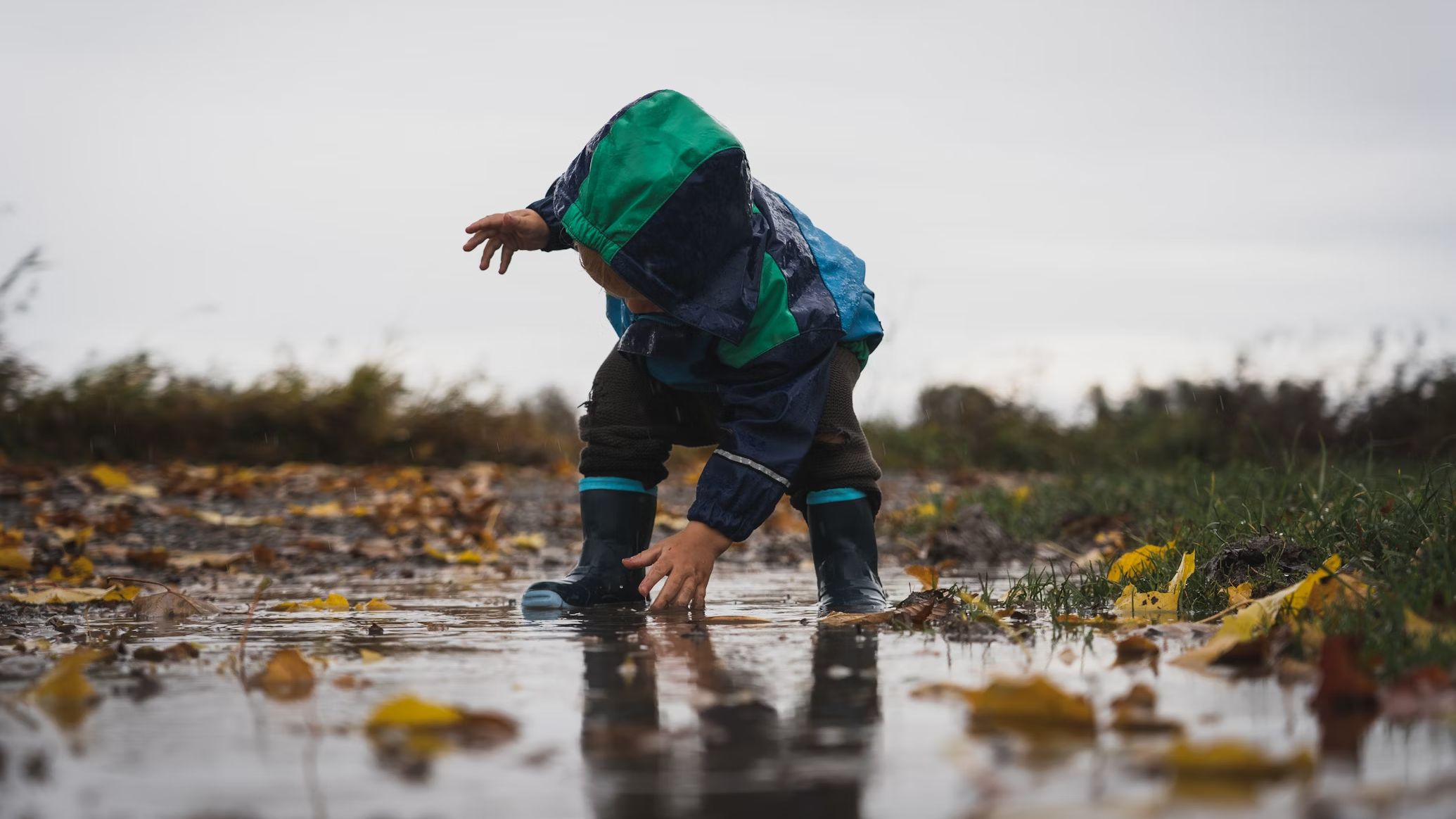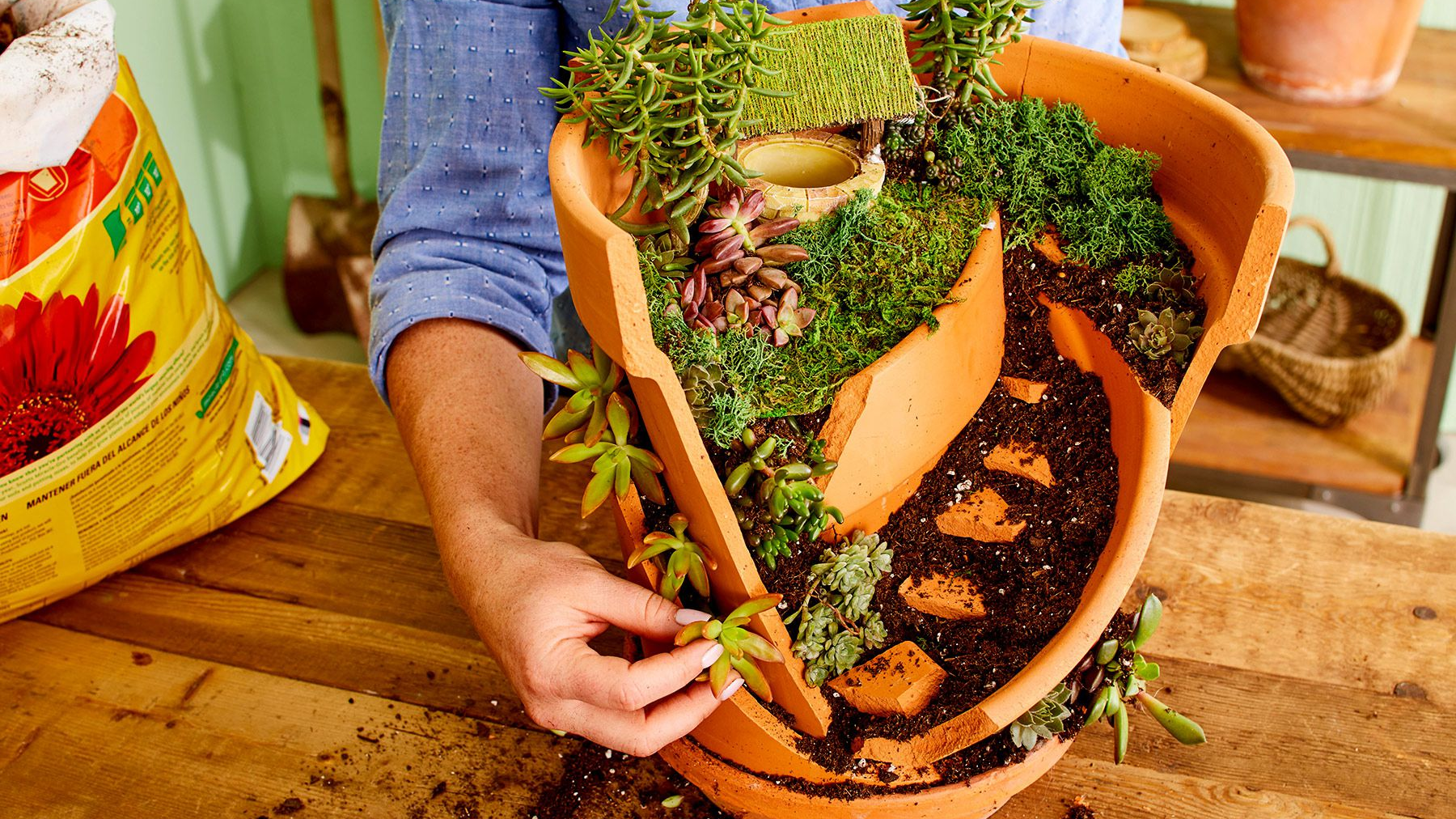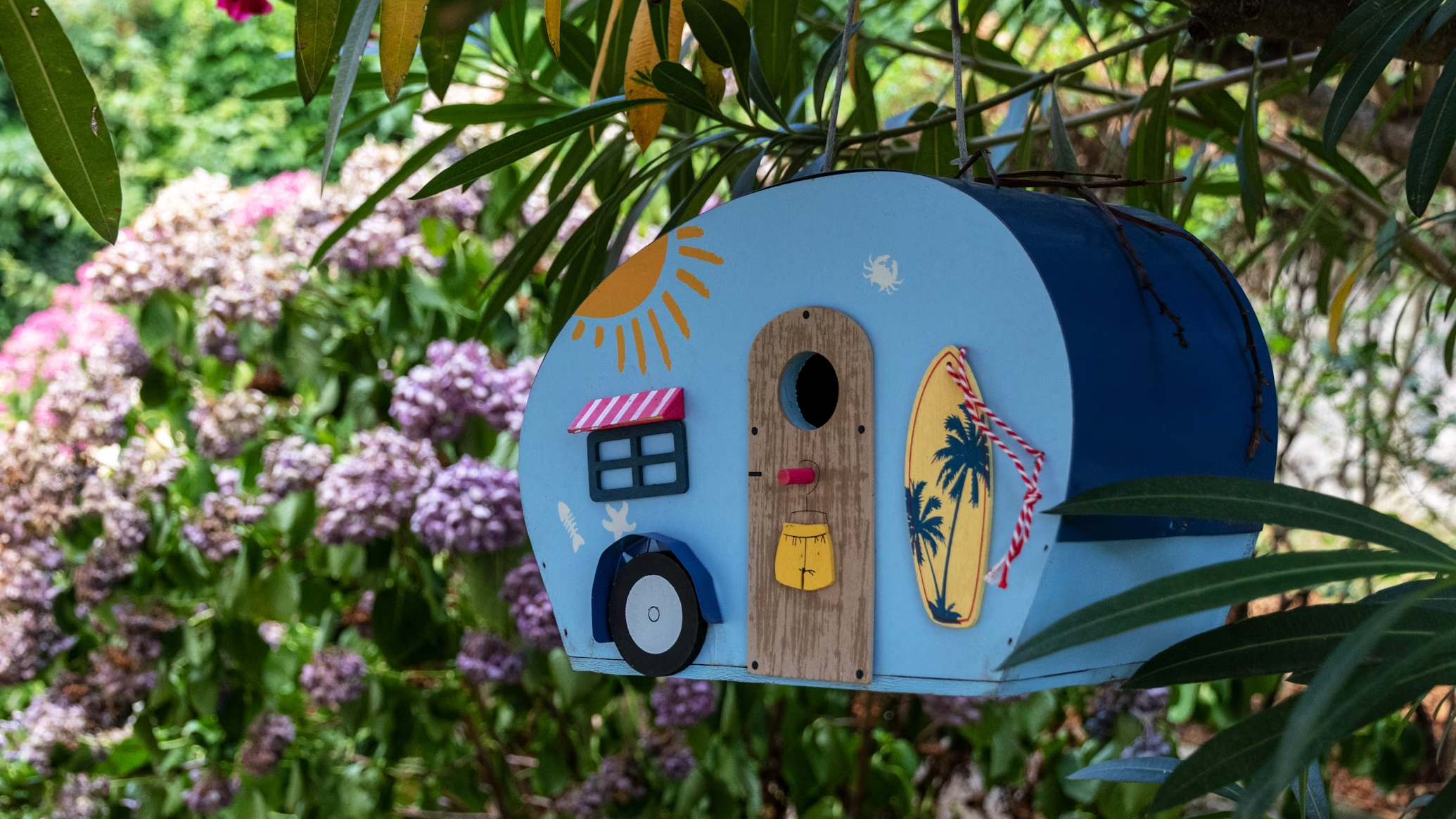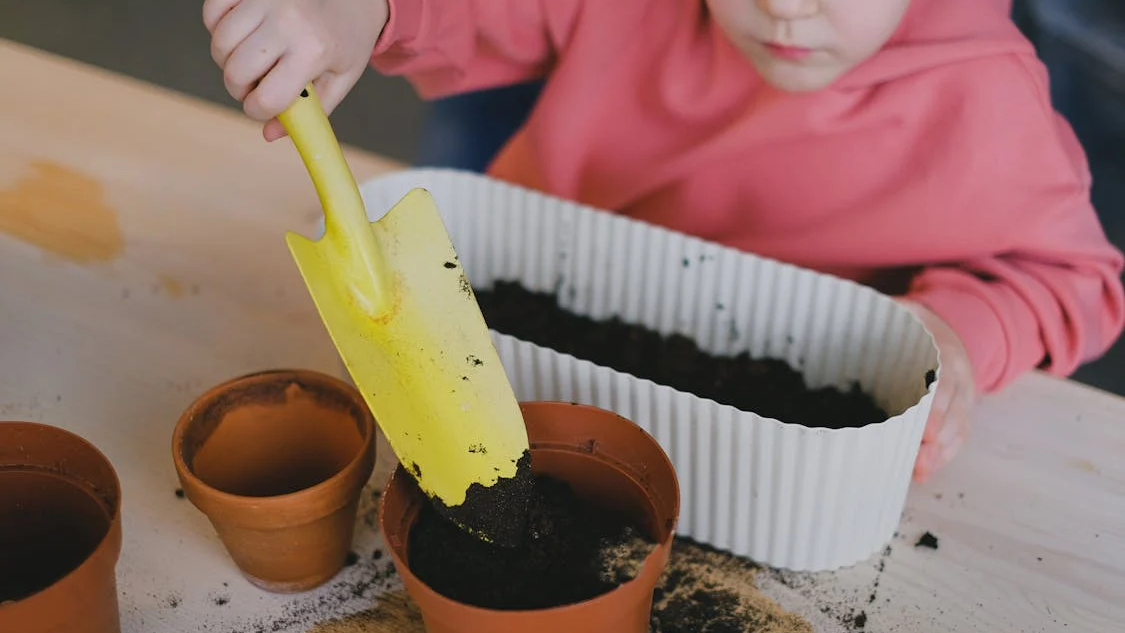12 DIY & Upcycled Garden Projects to Teach Kids Sustainability

Getting your kids excited about the magic of nature can be easier than you think. With these fun, hands-on educational ideas about DIY upcycled garden projects, you can teach them how to turn everyday things into awesome planters, seed starters, or even garden decorations.
Not only will they learn about gardening, but they’ll also understand why recycling and upcycling are so important for the environment. Let’s dive into some fun ideas!
Upcycled Garden Seed Starters

There’s something magical about watching plants grow from seeds, and for kids, it’s a hands-on way to develop their green thumbs. It’s not just about planting; it’s about understanding the effort it takes to nurture something from a tiny seed into a thriving plant.
This process is often seen in school projects, like growing a bean in a cup, but with a little creativity, you can bring that experience home using upcycled materials. Here are some fun, eco-friendly ways to get started:
- Egg Carton Seed Starters: Cut the top off a cardboard egg carton, fill each cup with soil, and plant your seeds. Cover with plastic wrap to create a greenhouse effect, trapping moisture and speeding up germination. Once the seedlings are ready, plant the whole carton in the ground—it will decompose naturally!
- Toilet Paper Roll Seed Starters: Cut slits into the bottom of each roll, fold the flaps inward to create a base, fill with soil, and plant your seeds. Like the egg cartons, the toilet rolls are fully biodegradable, making them perfect for planting directly into the garden.
- Plastic Bottle Seed Starters: Cut plastic bottles in half, poke drainage holes in the bottom, and fill with soil. These upcycled containers keep moisture in while letting excess water escape, making them ideal for germination.
Why it’s awesome: Not only do these options reduce waste, but they also allow kids to experiment with different materials and see which works best for growing plants. Plus, each material offers a different hands-on learning experience!
Creative Upcycled Garden Planters

Why settle for ordinary planters when you can repurpose items that give your garden personality and charm? Children will love the opportunity to create something unique, turning old household objects into one-of-a-kind planters. Plus, repurposing teaches them to think creatively and sustainably. Here are some ideas to inspire your little gardener:
- Old Boots or Shoes: Fill with soil and flowers to create quirky, personal planters.
- Teapots and Mugs: Great for small plants or herbs, adding a whimsical touch to your space.
- Tires: Paint them in bright colors and stack them for colorful raised beds or flower pots.
- Colanders or Metal Buckets: With built-in drainage, they’re perfect for quick, practical planters.
- Wooden Crates or Drawers: Line with fabric for larger flowers or vegetable plants.
- Tin Cans: Clean, paint, and use for small flowers or herbs—hang them for vertical gardening.
- Kitchen Strainers: A fun option for hanging plants, with natural drainage from the holes.
- Toy Dump Trucks: Outgrown toy trucks make great mini planters for succulents or small plants—kids love seeing their toys get a second life.
- Wagon or Wheelbarrow: An old wagon or broken wheelbarrow makes an excellent portable planter for larger plants.
These repurposed items make each planter unique, turning everyday objects into garden treasures while teaching the value of creativity and reuse. Also, things like plastic bottles take hundreds of years to break down.
By using them as planters, you help keep them out of landfills. Plus, it’s a great way for kids to learn about repurposing things they’d normally throw away.
Tin Can Lanterns: Light Up the Garden

Got a few tin cans lying around? Turn them into garden lanterns! With a little creativity, they’ll light up your outdoor space beautifully.
- Empty tin cans
- A hammer and nail (for making holes)
- A candle or small solar light
- Clean out the tin cans and poke small holes in the sides using a hammer and nail.
- Place a candle or solar light inside the can.
- Set them outside and watch as they glow in the dark!
Why It’s Cool: Recycling tin cans gives them a second life, and the lanterns make your garden look magical. It’s an easy way to show kids how upcycling can turn everyday things into something beautiful.
Water and Soil Education

Gardening isn’t just about planting flowers. It’s about taking care of the earth while growing cool stuff. One of the best ways to do that is by saving water and composting. Here’s how you can do both and why it’s pretty awesome.
Water Conservation: Keep Score with Nature
Watering plants doesn’t have to be boring. What if you could make it a challenge?
- Rain Barrel Challenge: Set up a rain barrel and see how much rainwater you can collect each week. The goal? Use only the water you collect for your garden. Keep track of how much you save compared to using the hose. Who can fill the most buckets of rainwater in a month?
- DIY Watering Cans: Want to level up your watering skills? Create a watering can out of an old plastic bottle, and see how much water you can save by being careful with your plants. The slower you water, the better they grow. You’ll feel like a pro gardener!
- Olla Race: Here’s a fun experiment: set up an olla (a clay pot buried in the soil) in one part of the garden, and water another area the regular way. Keep track of which plants grow the best. Spoiler alert: the olla might just win!

Composting: Create Your Own Plant Power-Up
Composting is like a superpower for your garden. And guess what? You’re the one in control of the power!
- Compost Treasure Hunt: Every day, look for things you can compost—apple cores, carrot peels, or leaves from the yard. It’s like finding treasure, except this treasure turns into plant food. Try to see how much you can collect by the end of the week and add it to your compost pile!
- Worm Farm Fun: Worms are your tiny garden workers. Set up a worm compost bin and see how fast your worms can turn scraps into compost. The more they eat, the more compost you get. Check on them daily and see who’s doing the most work—it’s like having a team of mini superheroes!
Making water conservation and composting fun turns everyday tasks into cool challenges. The best part? You get to see your garden grow stronger because of all the smart, eco-friendly choices you make!
DIY Vertical Gardens: Maximize Space, Minimize Waste

Vertical gardening is an innovative way to use small spaces while making gardening accessible and exciting for kids. Instead of spreading out, these projects let you grow upward, maximizing every inch of space. Here are some creative, upcycled ideas for vertical gardens:
- Hanging Plastic Bottles: Cut open the side of plastic bottles, fill them with soil, and plant your seeds. String them together vertically along a wall or fence for a space-saving garden.
- Pallet Planters: Lean an old wooden pallet against a wall or fence and plant in the gaps. This is perfect for herbs, flowers, or succulents and adds a rustic, eco-friendly touch to your garden.
- Old Gutters: Attach sections of old gutters to a fence or wall, filling them with soil and planting herbs or small flowers. The long, narrow shape is ideal for growing plants in compact spaces.
- Hanging Shoe Organizer: Repurpose a fabric shoe organizer by filling each pocket with soil and plants. Hang it on a wall or fence to create a unique and functional vertical garden.
- Picture Frames with Chicken Wire: Staple chicken wire to the back of an old picture frame and fill the gaps with moss or soil. Plant small succulents or herbs to create a living piece of art for your outdoor space.
Vertical gardens not only maximize limited space but also teach kids about the importance of creative solutions and resourcefulness in gardening.
Repurposed Kiddie Pool Garden

If you’ve got an old kiddie pool, instead of letting it go to waste, turn it into a kids’ garden! The size makes it a perfect “1-meter meal” space where kids can grow their own vegetables, herbs, or flowers, right at home. The shallow depth allows for fast-growing plants like lettuce, radishes, and spinach, making it easier for children to see results quickly, which keeps them engaged.
This small-scale garden teaches kids how food can be grown even in a compact space, and it can be moved around as needed.
The fun part is letting them personalize it—painting the pool, adding their own plant markers, or arranging stones to make it their own.
A kiddie pool garden is a great way to introduce the concept of growing your own food while repurposing something that would otherwise be tossed. Plus, it provides a clear, manageable space for kids to experiment and take ownership of their garden.
Bug & Bee Hotels: Safe Spot for Garden Helpers

Insects like bees and ladybugs are essential for any garden. They help pollinate flowers and control pests, so creating a bug hotel is a simple way to attract them while reusing materials you already have.
- Pallet Bug Hotel: Stack wooden pallets and fill the spaces with pine cones, sticks, and bark to create a cozy shelter for insects. It’s easy to put together and great for biodiversity.
- Bee Houses: Bundle together bamboo canes or hollow twigs and place them inside an old tin can or flower pot. Hang it up in the garden for bees to nest in. It’s an effective way to support pollinators.
Building a bug or bee hotel is a practical project that highlights the importance of creating a balanced ecosystem.
Broken Pot Planter: Create a Fairy Garden

Use broken pots to create a magical fairy garden that sparks kids’ imaginations. You’ll need broken clay pots or pieces, soil, small plants, moss, or succulents, and decorative items (small stones, figurines, etc.)
Why It’s Unique: This project turns broken items into beautiful fairy gardens, showing kids how to create something magical from what might otherwise be trash.
Birdhouses & Feeders: Upcycled Garden for Wildlife

Birdhouses and feeders not only invite birds into your garden but also offer a fun way for kids to connect with nature. Turn it into a project by tracking which birds or animals visit, and add some eco-friendly feeders to keep them coming back.
- Teapot Birdhouse: Repurpose an old teapot and secure it to a tree or fence. The spout makes for a perfect perch while the inside provides a cozy nesting space. Start a bird-watching log and see who moves in!
- Boot Birdhouse: Turn an old boot into a birdhouse by cutting an opening and hanging it from a tree. Add straw for nesting material and keep an eye out for feathered guests.
- Milk Jug or 2-LB Bottle Feeder: Use an empty milk jug or plastic bottle to create a wildlife feeder. Cut out a small opening for birds or squirrels to access the food, fill it with seeds or nuts, and hang it from a tree. You can make it a challenge to see which feeder attracts the most visitors!
Encouraging kids to make and monitor birdhouses and feeders can turn the garden into a wildlife hub while teaching them about the different species that visit.
Sensory Gardens: Engage Through Exploration

A sensory garden is all about experiencing the garden in more than one way—by touch, sound, smell, and sight. It’s like turning your outdoor space into an interactive adventure. You can even make it more fun by turning each area into a mini-exploration zone.
- Textures: Set up a “texture trail” where kids can explore different surfaces with their hands or feet. Plant soft plants like lamb’s ear or tall grasses, and mix in smooth stones, bark chips, or gravel. Turn it into a challenge: Can they find 10 different textures in the garden? Each new texture they discover earns a point!
- Sounds: Create a corner where different sounds come to life. Make a sound garden with wind chimes made from old spoons, bottles, or anything that can tinkle in the wind. You can even hide sound sources and have kids guess what’s making the noise for an extra challenge.
- Smells: Plant fragrant herbs like mint, rosemary, and lavender. To gamify it, create a “smell challenge” where the goal is to guess the plant just by its scent. For added fun, they can brush by each plant and see if they can tell what’s growing without looking.
- Visual Stimulation: Use brightly colored flowers or create visual paths by placing vibrant stepping stones or painted rocks. You can even turn it into an art project by having kids paint their own stepping stones for the path.
A sensory garden invites creativity and curiosity, turning a simple garden walk into an exploration of the senses.
Upcycled Decorations: Turn $5 into Unique Garden Art

Decorating the garden with upcycled and repurposed materials is an eco-friendly way to add personality and creativity to your outdoor space. Everyday items that might otherwise be discarded can be transformed into unique pieces of garden art.
- Thrift Store Challenge: Everyone gets $5 and a trip to the thrift store to buy items they can turn into a garden decoration. The goal? To create something that stands out and adds a personal touch to the garden. Old dishes could become plant markers, and kitchen utensils could transform into wind chimes.
- Mosaic Planters: Find broken plates, tiles, or glass, and use them to make a mosaic on an old planter. You can create patterns or leave it abstract—either way, it’s a creative way to reuse discarded items.
- Junk Drawer Windchimes: Raid the junk drawer for old keys, buttons, and bits of metal. String them together to make wind chimes that jingle in the wind. Turn it into a competition to see who can create the most unique sound.
Upcycled garden decor becomes even more exciting when it’s treated as a creative game. With a small budget and endless imagination, the garden turns into a reflection of personal style, resourcefulness, and fun.
Where to Find Inspiration for an Upcycled Garden

If you’re looking for new ideas or just some extra inspiration for upcycled garden projects, there are plenty of places to look. The more kids are involved in the planning process, the more excited they’ll be about trying new projects. Here are a few places you can explore:
- Pinterest: This platform is full of creative ideas for upcycling and recycling in the garden.
- Community Gardens: Visit a local community garden to see what other people are doing with their upcycled garden setups.
- YouTube Tutorials: There are countless tutorials that show step-by-step instructions for recycling projects you can do with kids.
- Books on Gardening with Kids: Many gardening books include sections on using recycled materials or creating eco-friendly gardens.
- Social Media Groups: Join eco-friendly gardening groups on Facebook or Instagram for tips, ideas, and project inspiration.
When kids see how other people are using recycled materials in their gardening, they’ll get excited about creating their own unique projects.
Closing: Teaching Through an Upcycled Garden

Gardening with upcycled and recycled materials is about much more than just growing plants. It’s about teaching kids the importance of sustainability, encouraging them to think creatively, and helping them develop a sense of responsibility for the earth. Through these projects, they’ll learn about waste reduction, resourcefulness, and the environment—all while having fun.
Not only will you help kids grow as gardeners, but you’ll also instill in them lifelong habits that will make them more eco-conscious adults.
Encourage your kids to look around the house for unused items, visit thrift stores for unique containers, and think creatively about how they can give new life to old things. In doing so, you’re building a foundation of sustainability that will have a lasting impact.
